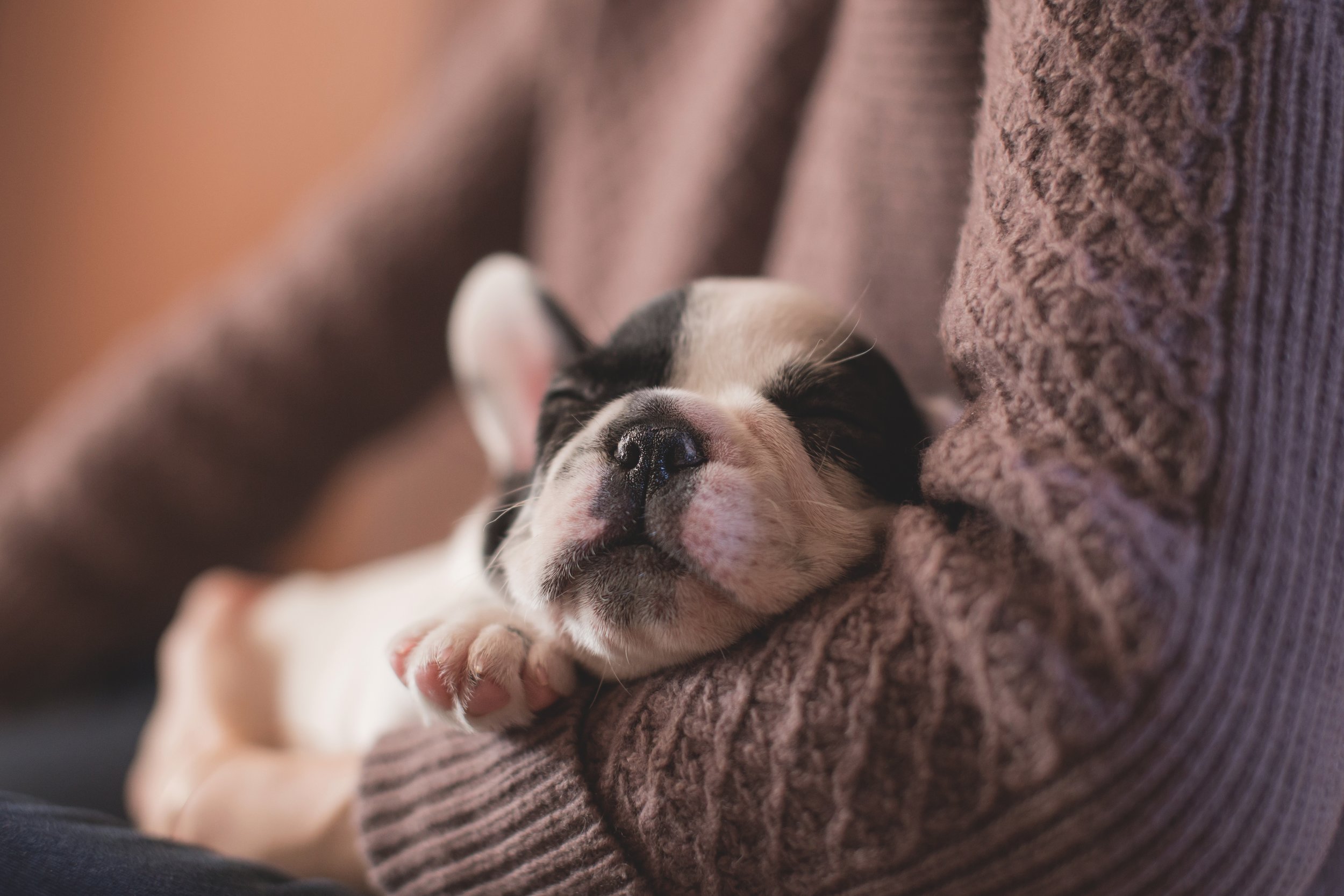The holidays are a great time to adopt a new puppy or rescue dog because you’ll have more time to help them get used to their new home and family.
Planning on having what you’ll need to help your dog settle into their new surroundings in advance can make the transition easier and set you and your furry friend up for success.
However, if you’ve been gifted a pet unexpectedly by a friend or family member you may not know what you should get or have any time to plan.
Either way, here are 6 tips for helping your new dog settle into their new home:
1. Decide on house rules before you bring your puppy or dog home.
Puppies and dogs do best in an environment where rules are clear and consistent, so make sure everyone in your household agrees on the particulars.
Things to consider are:
Where will your puppy or dog stay during the day and where will they sleep?
What schedule will you keep to housebreak them properly?
Will your newest family member be allowed on the bed? On the couch? Are there any rooms of the house that are off-limits?
Being prepared with knowledge of dog and puppy training basics like how to teach a puppy not to bite and how to train a dog not to do something is extremely important to avoid stress, so if you are not sure how to do these things, seeking out the help of a dog trainer is a good idea.
2. Stock up on the right supplies.
Make sure you and your dog or pup can settle in without too many mad dashes to the store by buying some of the basics ahead of time. Here’s what you’ll need:
a crate or exercise pen
a bed
food and water bowls
food and maybe some treats for training
a collar and leash
toys, especially chew toys
stain- and odor-removing cleaners
potty pads
possibly some baby gates to block off sections of your house
3. Prepare your house and have a good potty training set up in place.
This requires a little more work if you’re getting a puppy since they can be champion chewers and have a knack for getting into things they shouldn’t. But no matter what your dog’s age, you’ll want to do some organizing ahead of time.
Create a temporary, gated-off living space for your dog or pup where they’ll stay whenever you’re not with them. This is an absolute necessity for housetraining a puppy. This also keeps them out of trouble by preventing them from damaging your belongings or eating something that will make them sick.
Pick a room that’s a center of activity in your household, so your dog won’t feel isolated, and be sure it’s one with easy-to-clean floors. The kitchen is often a good choice; you can block it off with baby gates if needed. Make sure you remove anything that you don’t want to be chewed on or soiled.
What’s in your dog’s area will vary a bit depending on their age and how you’re house training. Puppy-proof to ensure anything that could hurt your dog–medicines, chemicals, certain plants–is out of reach.
4. Arrange for home care.
Ideally, you will need a few days or up to a week to get your new dog or puppy settled in. Potty training a puppy will take a few weeks, so be patient. It’ll also help the two of you bond, which can make training easier.
But even if you can take some time off, you’ll need a backup team in place pretty quickly. Enlist the help of friends or family to stop by and check in on your dog or pup, and find a good dog walker or daycare that you can rely on when needed.
5. Plan the trip home.
Find a helper to come along when you go to pick up your dog. Young puppies who’ve never been on a car ride before may get rattled, and even adult dogs can get nervous–and a terror-filled car ride can turn into a long-lasting phobia of car travel. Ask someone to sit next to your dog on the ride home, soothing him and keeping them from hopping into your lap while you’re driving.
If your dog is used to a crate, you can put them in the crate for the ride home. Just make sure it’s secured; sliding around the backseat will make the drive more stressful.
6. Find a good trainer or group dog training class.
Puppy classes, dog obedience classes, and private puppy training are great ways to bond with your new dog or puppy and to learn how to communicate with and train them.
Puppy classes, also known as puppy kindergarten, are especially recommended for young pups since they provide the ideal setting for socializing them with other canines and people–-a key part of raising a safe, friendly dog.
About the Author:
Los Angeles dog trainer Alexandra Bassett is the owner and lead trainer at Dog Savvy Los Angeles, a dog training company specializing in positive dog training and treating problem dog behavior like dog separation anxiety, leash reactivity, and aggression.
She is certified as Knowledge Assessed by the Council of Professional Dog Trainers (CPDT-KA) and is available for online dog training sessions via Zoom.








